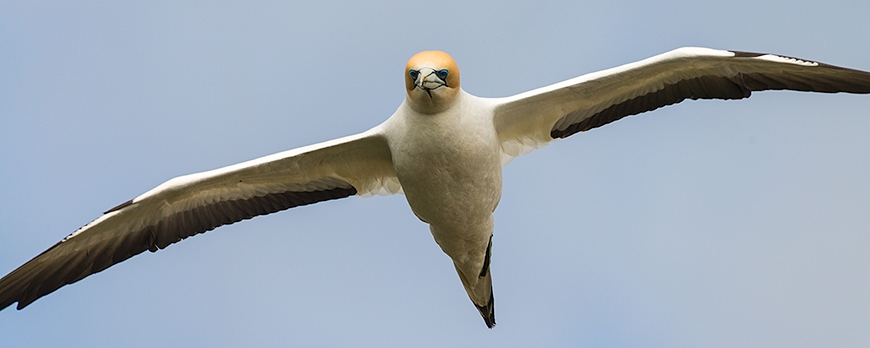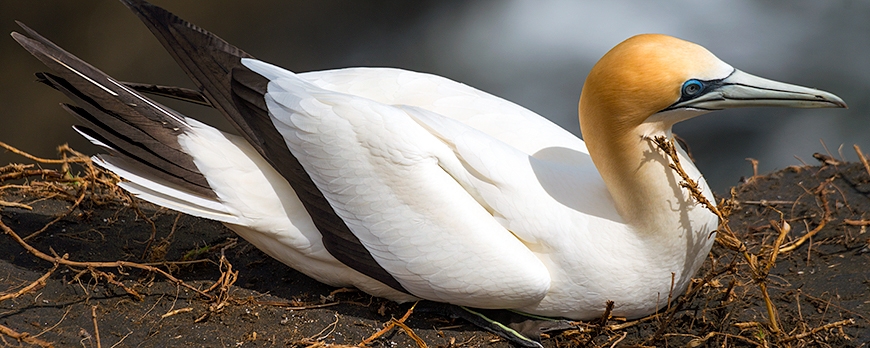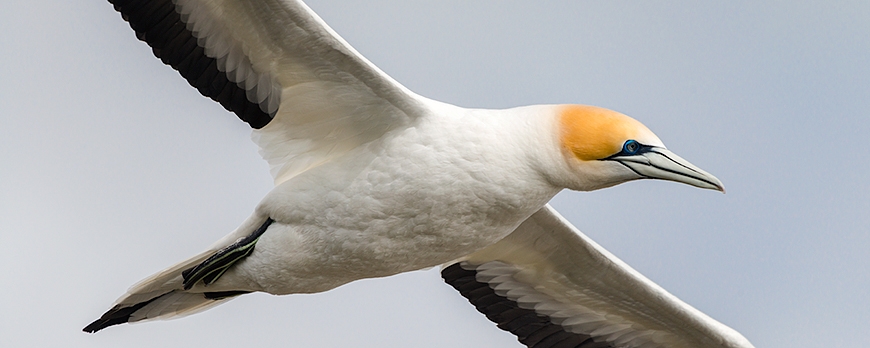Quirky, beautiful, graceful, awkward, quarrelsome, noisy, courtly, loving - the Gannet is all of these and more...
A clash, beaks interlocking, necks straining like a feathery arm wrestle. The bird on the right starts to gain the upper hand and force his/her opponent onto its back and then quickly shifts position and applies a choke hold clamping its beak across the neck of the other. Struggling to no avail the bird gradually becomes motionless. Has this been a fight to the death? We wait with bated breath. Eventually though, the tormentor releases its hold, the vanquished one remains sprawled without moving for some minutes then slowly gets to its feet shakes its no doubt tender neck and shuffles off the battleground. Meanwhile the victor preens itself, stands tall with wings spread and accepts the plaudits of the crowd. Except there are no plaudits, the multitudes of gannets on the nesting site have been totally oblivious to that just described spectacle or indeed any of the other endless dramas that mark life in a gannet colony. Territorial squabbles, thefts of nest materials, lovemaking, even deaths and most of all the comings and goings that are of endless fascination to the human observer, don't concern the average gannet - unless it involves them directly.
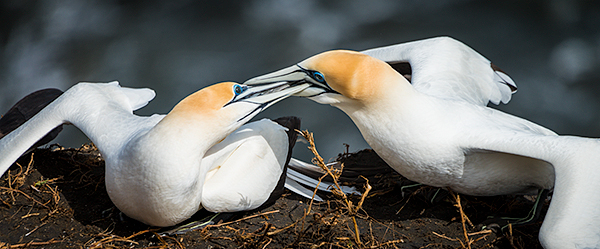
| The right hand bird is the aggressor here, it's in the better position and can apply more leverage on the other. |
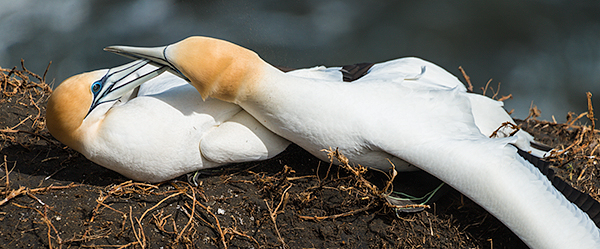
| Using the weight of its body, it hold the other down. Male and female gannets are identical, so we don't know the gender of the protagonists. |
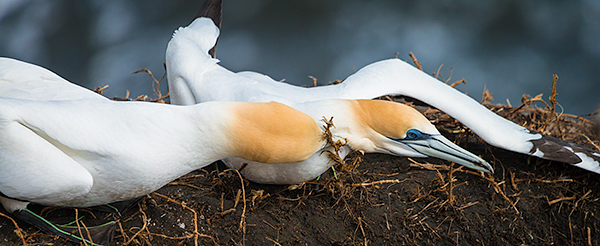
| A vicious clamp on the neck and it's all over. Immobility is a signal of capitulation. |
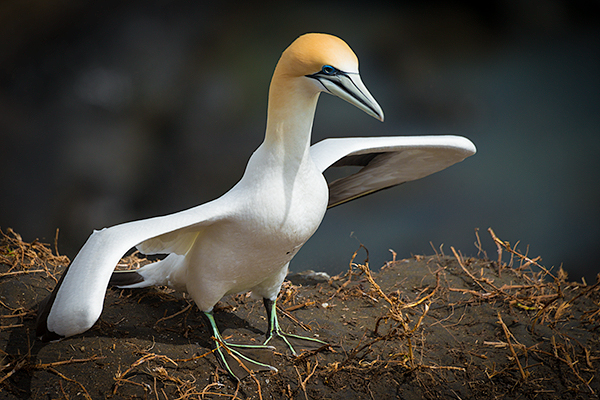
| The victor struts its stuff. |
A few hours on the viewing platforms at Muriwai is very rewarding, especially to a photographer. When the wind is strong, landing back in the colony after feeding or the gathering of nest materials can be a very difficult manoeuvre - sometimes requiring a number of attempts to judge it just right in the gusty wind. A mistimed landing can cause a bird to cannon into nesting neighbours and result in loud squawks of indignation and savage pecks to the head and neck of the miscreant.
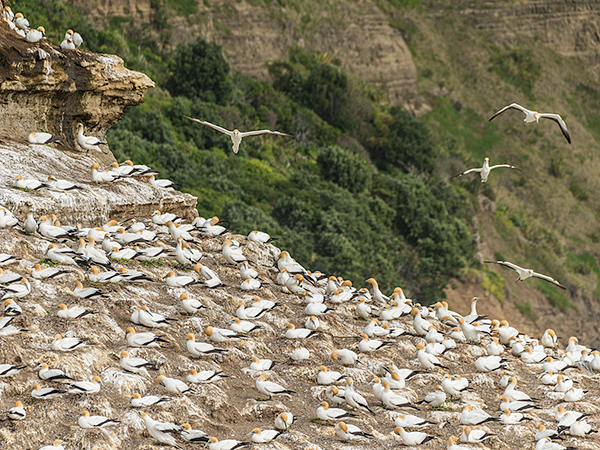
| The nesting couples are packed into every suitable space. Distance between nest mounds is determined by the reach of the beaks in all directions. |
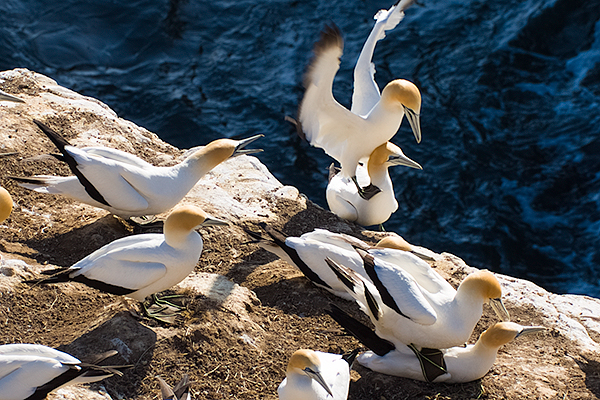
| A slightly inaccurate landing here. The descending bird, in avoiding its neighbour's reaching beak, collides with its own mate.The couple in the right foreground are oblivious to the fuss... |
It is in the air that these birds are at their best, with their 1.8 metre wingspan they are exceedingly beautiful and graceful masters of the air currents. Photographing the soaring and hovering gannet is a delight, though challenging and just about every successful photo looks great. Of course, some practice at panning the camera, getting to grips with exposure settings that preserve the highlight detail of the white feathers and making sure that the birds eyes are in focus is necessary - but that's part of the challenge.
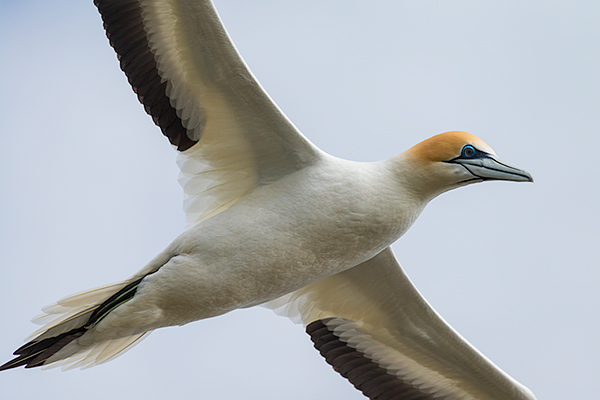
| The aim of the Gannet photographer is to capture detail in both the white feathers and the darker areas. Set the camera to manual mode, expose for the bird and forget about the background. |
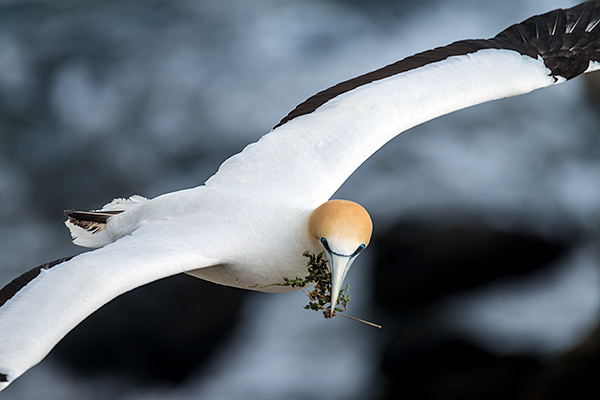
| Returning to the colony with nesting material. |
Leaving their mate to guard the nest they can fly up to 500 km per day in search of food, small fish that feed near the surface. Sighting their prey they plunge dive from about 15 metres high to depths of up to 20 metres and can spend around 40 seconds underwater pursuing prey using wings, feet and body undulations in swimming...
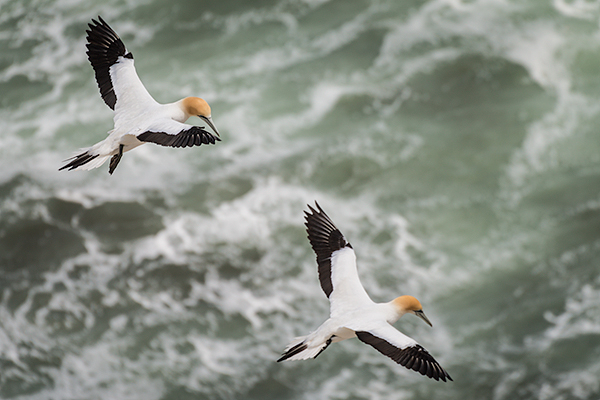
| Pilchards and Anchovies are the Gannet's preferred diet, though any small fish will do. From high above the water they can easily spot these tiny fish. |
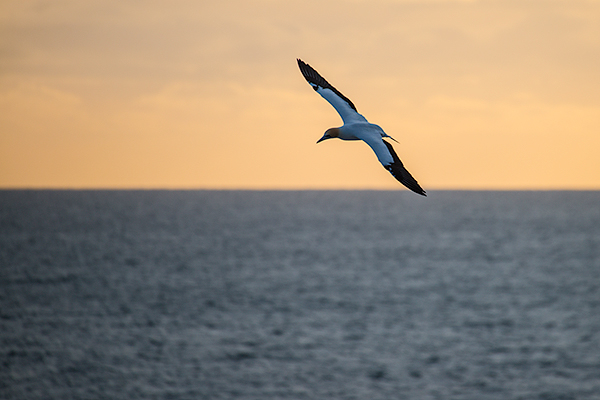
| Some Gannets migrate to Australia between breeding seasons. Fledglings fly direct to Australia and remain there until their third season. |
"Equipped with extraordinary vision they can adapt their optical capability in a split second from air to water, while effectively blocking out ultraviolet light reflections that distorts the position of darting prey" (Massey biologist Gabriel Machovsky Capuska)...
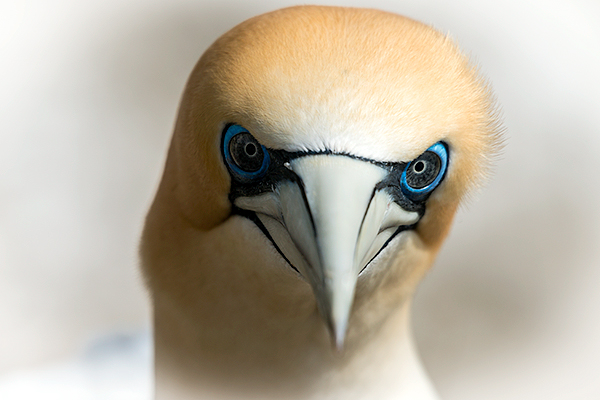
| The Gannets eyes are positioned far enough forward on the face to give them binocular vision, which allows them to judge distances accurately. |
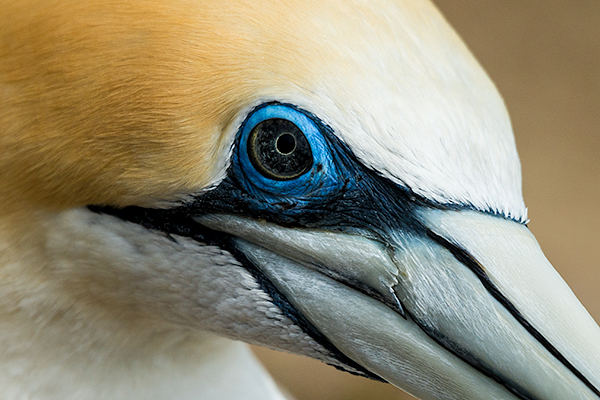
| There is a ring of bluish skin around the eyes, which explains the alternative name of 'Spectacled Goose' in some parts of the world. |
Arriving back at the nest they participate in elaborate greeting rituals with their mate. Interestingly they have separate landing and takeoff calls, something like "urrah urrah" when about to launch themselves from the colony and something like "oo-ah" when about to land...
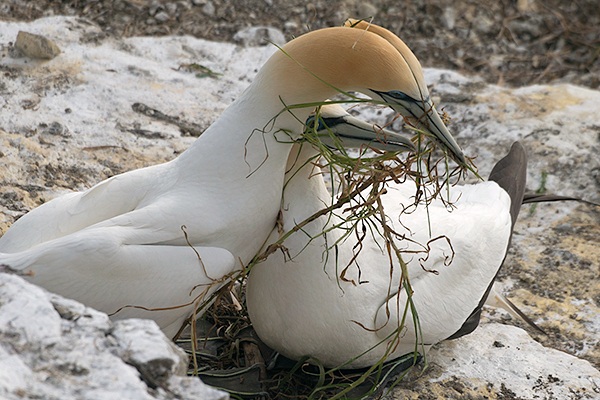
| A return with grasses for the nest elicits a ritualised celebration. |
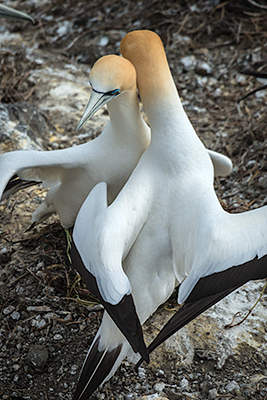 | 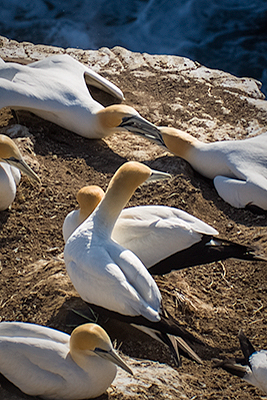 |
| Neck rubs, bowing and Gannet hugs after the return of a mate (left). 'Beak fencing'. It may look like these two are fighting, but no, it's part of the welcome home ritual (right). |
Our observation of visitors to the Gannet viewing platforms seemed to suggest that most were just ticking off 'see the Gannets' on their sight-seeing check list... A pity, because in our opinion, they are missing so much. It can be valuable to spend enough time to really observe all that's on offer. Some research from the loads of information on the web can help in the appreciating.
Here's an example, a great article which we've quoted from above. Be sure to watch the video - it's a revelation.
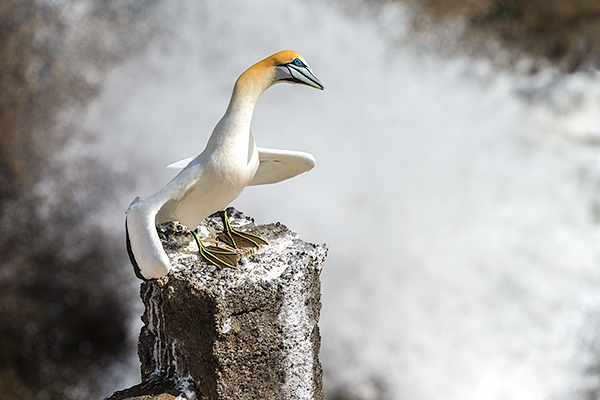
We spotted this Gannet on the concrete post but had to wait some considerable time for it do something interesting - fortunately, just as a wave was crashing into the rocks below. We like this image :-)
|




